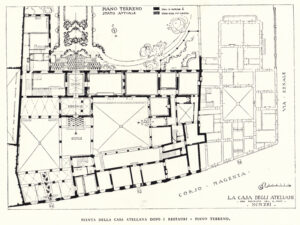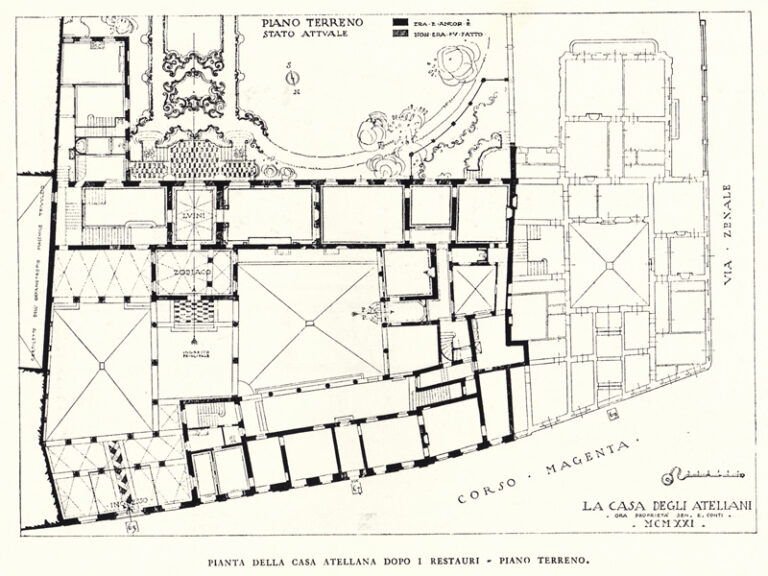Well, the North Wind is a cool guy, in Norse mythology. He has a crucial role in untangling the lovers’ troubles in East of the Sun and West of the Moon, as we have seen last time I got the chance to write about Norse mythology and about the illustrated book I have desired for so long and finally bought.
I didn’t make any promises and I also have the advent calendar coming out on a regular basis, alongside some Dynamo tutorials. Still, I wanted to tell you stories to warm our winter nights, and this seems like a good chance to do it. So tonight I’ll get into another story, not one of the most known: The Lad who went to the North Wind. You can read it here, in case you don’t want to listen to me. And you can also fuck off, in that case.
The North Wind, as I was saying, is a cool guy. In East of the Sun and West of the Moon, he’s the only one able to provide an answer, and so is in Tolkien’s Lament for Boromir. This should be enough. In case you’re still not convinced, you could go and read George MacDonald’s At the Back of the North Wind, in which a boy named Diamond has incredible adventures with the benevolent and terrible North Wind herself (here personified in female form).

Boreas, who gives the title to this beautiful painting by Waterhouse, is no other than the North Wind in Greek mythology.
If you’re still not convinced, let’s take a look at The Lad who went to the North Wind, one of the Norse folk tales collected by Peter Christen Asbjørnsen and Jørgen Moe, featured in the Tales from the North edition illustrated by Kay Nielsen.
1. The Story
The tale starts with trouble: the North Wind with his violent temper is causing distress to the main character’s mother, therefore our hero decides to embark on a journey to the North Wind’s house, in order to tell him to behave and in order to claim their meal back. You just have to love a character with such an attitude to go and tell the North Wind that he’s just being a jerk.
Once on a time there was an old widow who had one son and, as she was poorly and weak, her son had to go up into the safe to fetch meal for cooking; but when he got outside the safe, and was just going down the steps, there came the North Wind, puffing and blowing, caught up the meal, and so away with it through the air.
The boy thus embarks on the journey and we don’t get details about how perilous and long that might have been: we just pick up at the North Wind’s house. The wind himself seems to be quite an amiable fellow. Naturally, he doesn’t have any notion of having the boy’s meal, but he’s gracious enough to produce a first gift: a tablecloth that will produce any kind of food on command.
“I haven’t got your meal,” said the North Wind; “but if you are in such need, I’ll give you a cloth which will get you everything you want, if you only say, ‘Cloth, spread yourself, and serve up all kinds of good dishes!’”
The cloth works marvelously, but the boy makes the mistake of showing it to the landlady of an inn he stops by on his way back, and the woman replaces the magic cloth with a regular one. When he gets home to his mother, the demonstration fails.
“Now,” said he, “I’ve been to the North Wind’s house, and a good fellow he is, for he gave me this cloth, and when I only say to it, ‘Cloth, spread yourself, and serve up all kinds of good dishes,’ I get any sort of food I please.”
This is unpleasant enough, but the boy is fucking stubborn so he goes back to the North Wind and complains.
“I want my rights for that meal of ours which you took,” said the lad; “for as for that cloth I got, it isn’t worth a penny.”
The North Wind is a pleasant fellow and doesn’t react as we might expect: he simply says that he has no meal nor money, but he offers to give the boy a ram (or a donkey, I’m not quite sure of the best translation) which produces gold on command.
“After all, the North Wind is a jolly fellow; for now he has given me a ram which can coin golden ducats if I only say, ‘Ram, ram! Make money!’”
Unfortunately, he stops at the same inn and the landlord sees him trying out the ram and you can guess how it goes: he replaces the ram with an ordinary one.

Another wonderful illustration by Scott Gustavson, even if the ram is a goat and it’s not making money from the side I expected.
“Ram, ram! Make money!” said the lad; but if the ram made anything it wasn’t money.
Therefore the boy goes back to the North Wind complaining and again the North Wind is a complacent fellow. Only, this time he doesn’t have anything more to give or, more likely, he’s sick and tired of wasting wonderful gifts on someone who doesn’t know how to keep hold of them, therefore he gives him one last gitf: a stick that will beat up someone endlessly unless it’s told to stop.
So you might guess as it goes: the boy stops at the same inn and by this time he has figured out what happened to his previous stuff. He pretents to fall asleep and when the landlord approaches, and tries to exchange the staff with an ordinary one, the boy orders the stick to start beating him. In order to convince him to make it stop, the landlord offers to give him back this stuff.
Then he took the cloth and put it into his pocket, and went home with his stick in his hand, leading the ram by a cord round its horns; and so he got his rights for the meal he had lost.
The story is sometimes called The Boy Who Went to the North Wind and Demanded Back His Flour.
2. The Illustrations
The only illustration by Kay Nielsen in this very short story, at least in the book I own, is the black and white one I provided above and shows a North Wind going away with the meal. There’s also another beautiful motiv of leaves and birds, between this story and the next, but it’s unrelated.
In browsing the net and looking for something more, however, I came across the wondeful work of Scott Gustavson, who illustrated the story in this Classic Fairy-Tales collection. His original artworks are for sale, so knocks yourselves out.
I love his North Wind, although you have to admit that in the story it turns out to be a much jollier fellow who couldn’t care less and has the house full of stuff he’s just waiting to give away.
And he doesn’t seem too please when the boy comes back the third time, which is not how the original story goes but it’s something I surely would understand. I’m not a shopping mall, boy.
If you’re looking for something more traditional, this post is showing nice black and white illustrations: they’re from another Danish illustrator, Niles Wiwel, who illustrated the tales around the 1890s. The guy from the blog is also looking for support to publish his selection of Norwegian Folktales: see his patreon if you have a dime to spare.
If you’re looking for something in a different style, you might like the work of Emma Latham, who has a style more aligned with what you might expect from children’s book nowadays.
3. The Themes
This story has lots of themes who are not uncommon in other stories, but the most striking similarity is to a Brothers Grimm fairy-tale called The Wishing-Table, the Gold-Ass, and the Cudgel in the Sac. In this story, it’s not the same boy who receives the gift, but the gifts are strikingly similar. As the story goes, the three sons of a tailor are driven out of the house by the lies of their family goat and they seek different employment: the first son go to a furniture-maker and receives a magic table that decks itself; the second son goes to work for a miller and gets a magical donkey that makes money (again from the side you would expect); the third son goes to a woodmaker and receives a wooden club in a sack. Both the first two sons brag about their gifts at the same inn and gets tricked as in the Norwegian tale. It’s up to the third son to set things right.
The story was illustrated by Arthur Rackham in 1917, another of my favorite illustrators.













No Comments